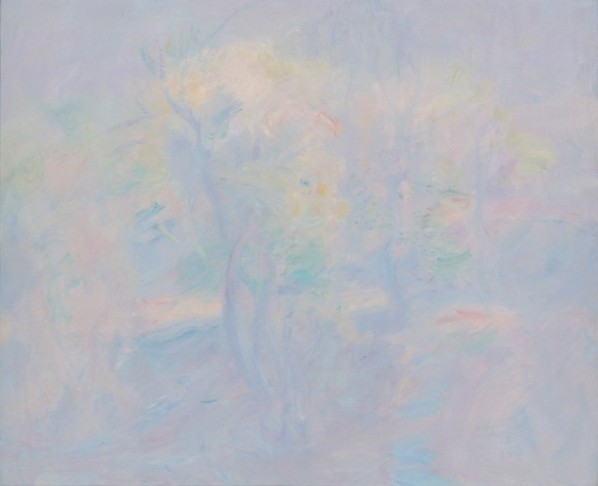
Wang Jingwu, Scenery, 2013; oil on canvas, 80x100cm
Exhibition Preface / Peng Feng
I am impressed by the nuanced colors in Wang Jingwu's recent paintings at his studio located in Wangjing. Frankly speaking, before seeing Wang Jingwu's works, I had never imagined that the colors of oil paintings could have such an amazing power on rendering an atmosphere.
Wang Jingwu has dedicated himself to the exploration of colors in oil paintings for a long time. Starting from an impressionist, he has created a path of colors with an Eastern style. Wang Jingwu's path of exploration is so unique that we can hardly find a company on the same path. It differs either from abstract paintings that give meanings to colors, or expressionist paintings that use colors to express passion, or artists who like to explore materials to highlight the texture of colors. Instead, it uses the mixing of colors to create an atmosphere. Wang Jingwu's paintings are illustrations of the beauty of atmosphere discovered by neo-phenomenologists. According to neo-phenomenological aesthetics, atmosphere is situated between a subject and an object and is formed by the unification of the subject and the object, containing the elements of both the subject and the object. The atmosphere in this sense is similar to the artistic conception in Chinese classical aesthetics, and both of them refer to a state of an existence between the subject and the object. According to neo-phenomenological aesthetics and Chinese classical aesthetics, the essence of arts and aesthetics resides in the state between the two. Therefore, it is not difficult for us to understand why Chinese paintings promote the idea between the like and the unlike. Chinese painters are familiar to use "in-between" to evoke the intermediate state. The idea of "in-between" here is usually reflected by the use of expressing meanings without a full use of brushes and by the use of five different colors of ink during the performance of painting.
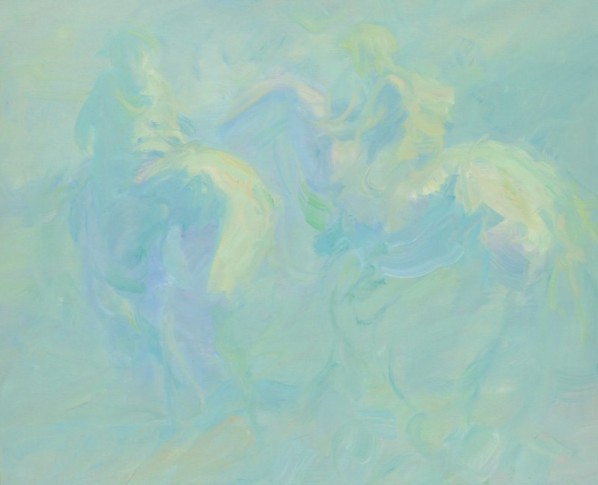
Wang Jingwu, From Lin Muge, 2013; oil on canvas, 80x100cm
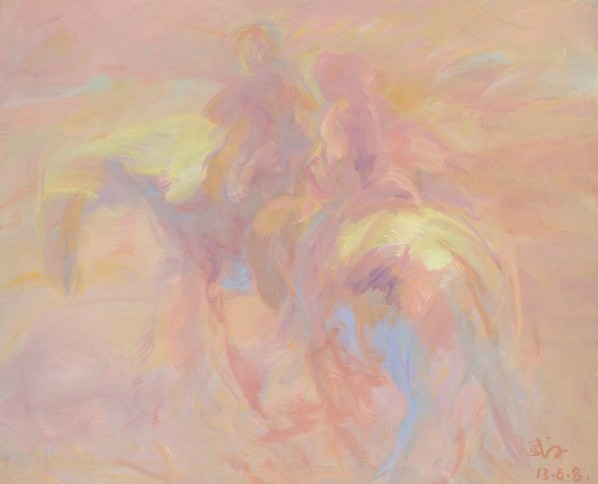
Wang Jingwu, Horse, 2013; oil on canvas, 80x100cm
Wang Jingwu likes quick sketches and strives to pursue the performativity of painting. However, different from many other artists who try to incorporate traditional Chinese paintings into oil paintings by highlighting the difference of the touches of brushes on paintings,Wang tries to hide the lines of painting under the cover of atmosphere. What Wang Jingwu values is not freehand painting but artistic conception. Different from traditional Chinese painters who use brushes and ink to create an atmosphere, Wang Jingwu uses oil painting colors to heighten an atmosphere. This exploration not only is a breakthrough from the atmosphere created by Chinese paintings, but also a breakthrough from the colors of oil painting. As we all know, there can be no connection to nature either by creating an atmosphere through traditional Chinese paintings or by heightening an atmosphere through oil paintings. Artists can have their own subjective expression through freehand Chinese paintings or abstract oil paintings. While freehand Chinese painters wallow in the games of brushes and ink and abstract oil painters are intent on the differences of configuration in paintings, Wang Jingwu enjoys sketches from nature. Although very abstract from the surface, his paintings are the products of sketches from nature. But Wang Jingwu has not stepped onto the path of realistic paintings. His purpose of conducting sketches from nature is not to record the shapes of things but to feel their meanings and atmosphere.
We can easily feel an atmosphere when we position ourselves in nature or face things. But it is not easy to express the atmosphere, because it is not an object in existence. There is no form or substance, border or boundary. Speaking from this perspective, we have to stay in an atmosphere to feel it instead of staying away from it to describe it. The expression of an atmosphere needs to go through a transformation into a tone of music or color in order to be shared with others. Although vague and intangible, the tone of an atmosphere is unitary and certain. This transformation has been completed by Wang Jingwu. He immerses himself into nature to sketch is not to record nature like a camera but to explore and research on a tone. Once an atmosphere is transformed into a tone, colors can be found to express the atmosphere. There is an inevitable connection between the tone of an atmosphere and colors. In other words, among the works of Wang Jingwu, there is a question of accuracy and inaccuracy, namely, the question of whether colors can accurately express a tone. The tone is like a spirit that can unify an atmosphere into a whole. Because of this, the colors used by Wang Jingwuare no longer loose or trivial, but they have formed their own spirits, crystalized as a whole. But Wang Jingwu has not stepped onto minimalism or color-field painting. His sketches from nature can be found under the colors of unity and simplicity. Simplicity and richness coexist in his paintings. As a matter of fact, this is the true face of nature, and this is wherethe uniqueness and charm of Wang Jingwu's works reside.
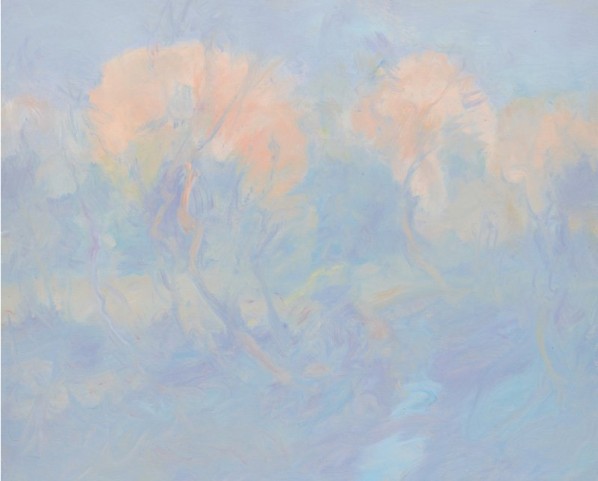
Wang Jingwu, Scenery, 2013; oil on canvas, 2013
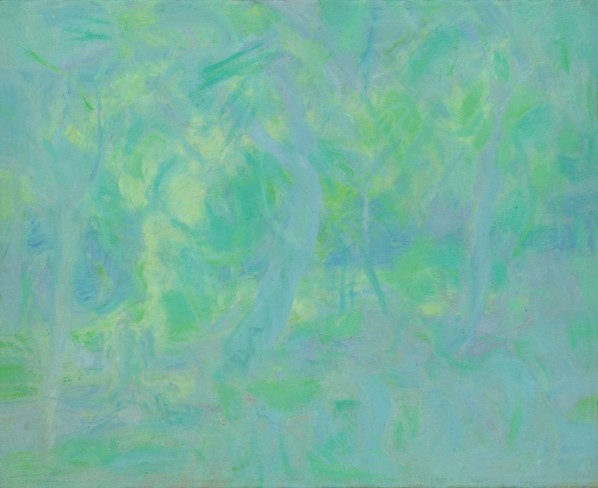
Wang Jingwu, The Summer Solstice, 2010; oil on canvas, 80x100cm
About the exhibition
Duration: Jan 1 - 13, 2014
Venue: Today Art Museum - 3rd floor exhibition hall of Building No.1
Opening: Jan 1, 2014 Wed 15:30
Gallery Opening Hours: 10:00-18:00, Closed on Tuesday
Tel: 010-58760600
Add: Pingod community, No.32 Baiziwan Road, Chaoyang District, Beijing
Courtesy of the artist and Today Art Museum, for further information please visit www.todayartmuseum.com.




























